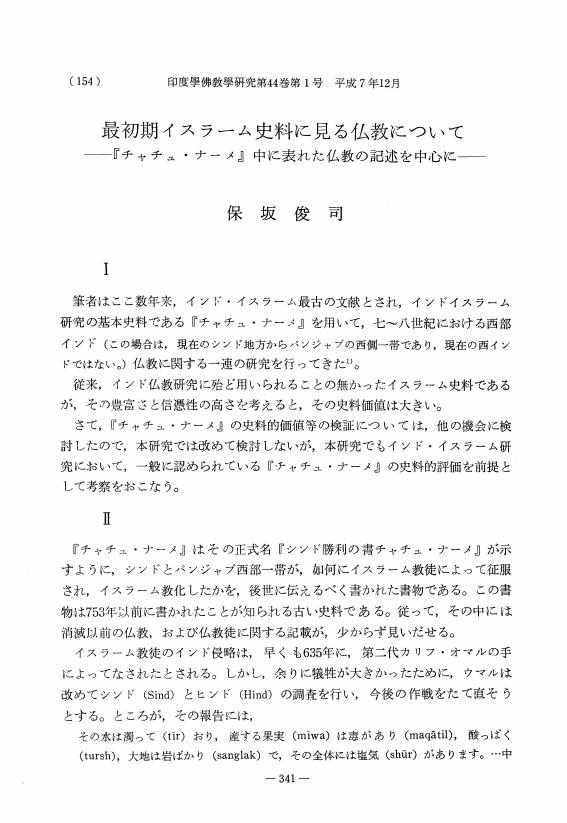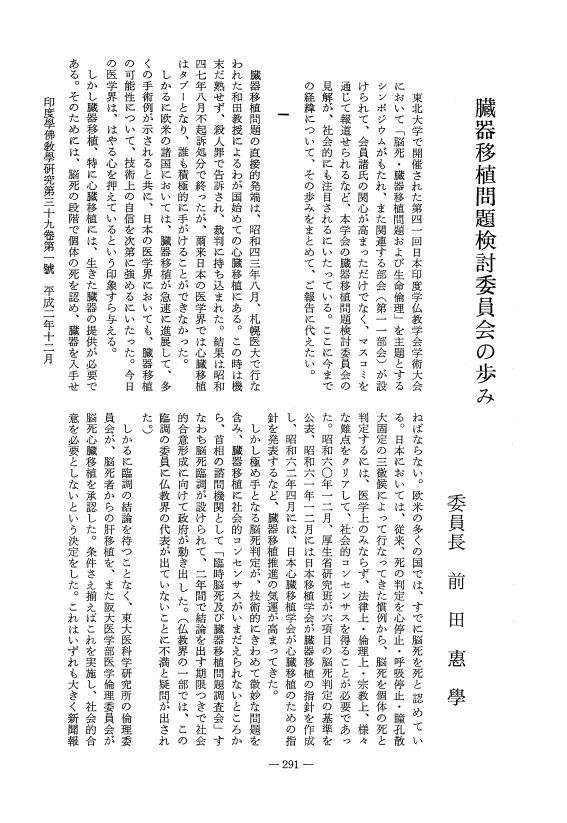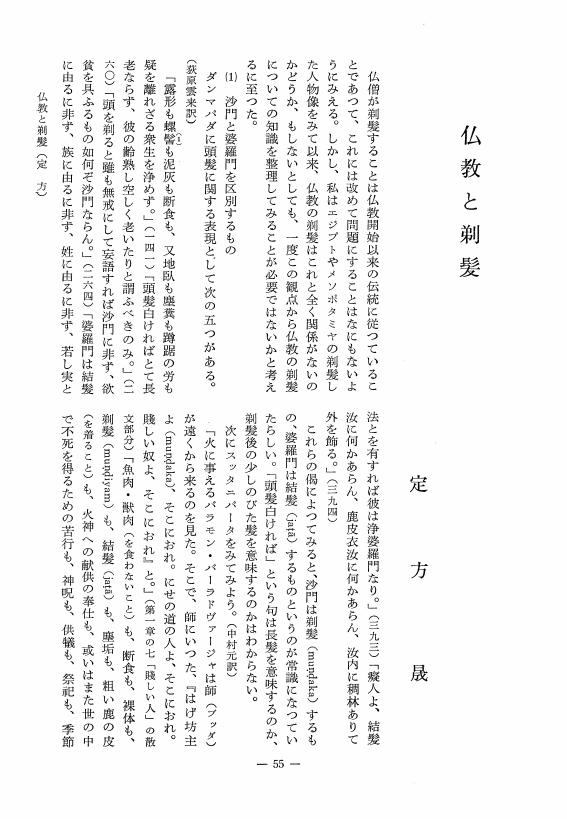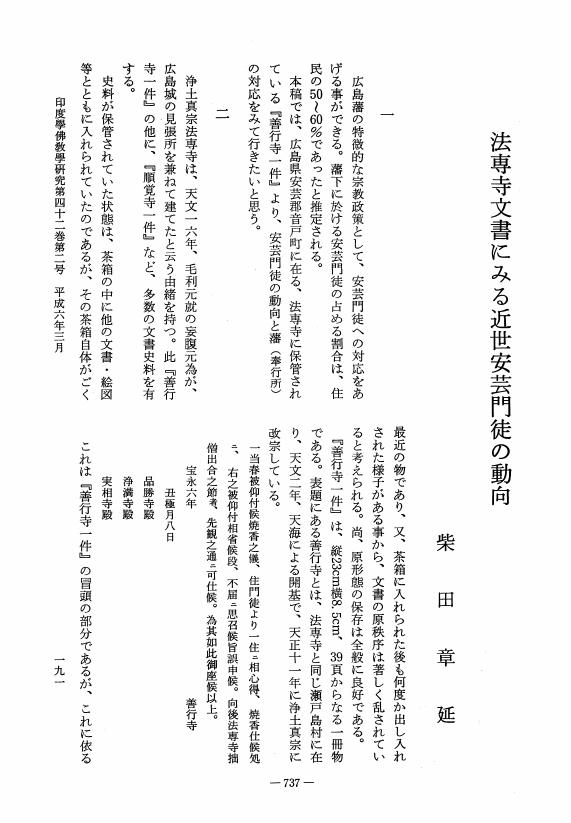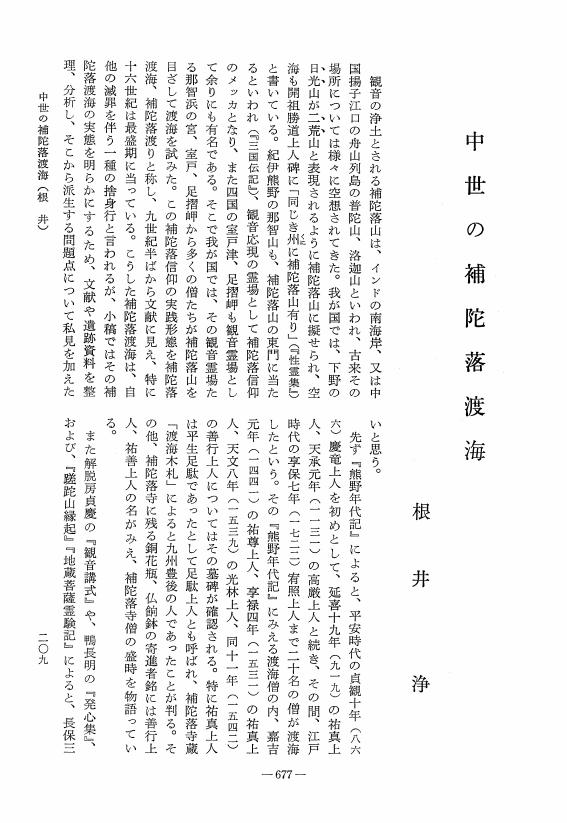- 著者
- 宮本 正尊
- 出版者
- JAPANESE ASSOCIATION OF INDIAN AND BUDDHIST STUDIES
- 雑誌
- 印度學佛教學研究 (ISSN:00194344)
- 巻号頁・発行日
- vol.13, no.2, pp.855-845, 1965-03-31 (Released:2010-03-09)
7 0 0 0 ジャムヤン・シェーパのチベット仏教史年表
- 著者
- 西岡 祖秀
- 出版者
- JAPANESE ASSOCIATION OF INDIAN AND BUDDHIST STUDIES
- 雑誌
- 印度學佛教學研究 (ISSN:00194344)
- 巻号頁・発行日
- vol.54, no.1, pp.497-493,1285, 2005
The Chronological Table of Tibetan Buddhist history of 'Jam-dbyangs-bzhad-pa precedes the famous chronological table of Sum-pa-mkhan-po. A feature of both chronological tables is that they were written in acceptance of the legend of the country of Shambhala, as taught in the <i>Kalacakratantra</i>. Namely, they record that the 25th generation Raudracakrin king of the ideal Buddhism kingdom Shambhala will win the final war with Islam, reviving Buddhism. Sum-pa-mkhan-po projects the date of this event to be A. D. 2376.
- 著者
- 保坂 俊司
- 出版者
- JAPANESE ASSOCIATION OF INDIAN AND BUDDHIST STUDIES
- 雑誌
- 印度學佛教學研究 (ISSN:00194344)
- 巻号頁・発行日
- vol.44, no.1, pp.341-338, 1995-12-20 (Released:2010-03-09)
6 0 0 0 OA 不邪婬戒再考 ――風俗通いは許される? ――
- 著者
- 岩井 昌悟
- 出版者
- 日本印度学仏教学会
- 雑誌
- 印度學佛教學研究 (ISSN:00194344)
- 巻号頁・発行日
- vol.64, no.1, pp.308-302, 2015-12-20 (Released:2017-09-01)
6 0 0 0 OA 仏典における性差別の解釈をめぐって
- 著者
- Shobha Rani DASH
- 出版者
- Japanese Association of Indian and Buddhist Studies
- 雑誌
- 印度學佛教學研究 (ISSN:00194344)
- 巻号頁・発行日
- vol.55, no.2, pp.1024-1020,1290, 2007-03-20 (Released:2010-07-01)
Previous studies state that a number of Buddhist canonical texts suggest discrimination against women, such as the Buddha's reluctance to allow women to enter the Sangha, the subordinate status of the bhikkhunis under the eight strict conditions (attha garudhamma), the inferior terms used for the women in the canonical texts, the five obstructions of a woman, her incapability to become a Buddha etc. How these discriminatory expressions gradually became hindrances to ordination of womenfolk is discussed in this paper.In this paper, the possibilities of the misreading of Buddhist texts have been examined. When reading a text, we sometimes consider the subject matter just from its ostensible meaning. This ultimately leads us into a quick mire. The problem does not lie in the scriptures themselves; rather, it is our misleading interpretation that often grows out of nuances in translation. What has come down to us today as the problem of bhikkhuni ordination or gender discrimination is possibly the outcome of misinterpretations that grew out of the socially defined realities of the times and the places where the texts were written and the linguistic demands of the target languages. This has been discussed by a close examination of key passages from Pali, Sanskrit and Chinese texts.
6 0 0 0 OA 敦煌本「大雲経疏」の研究
- 著者
- 滋野井 恬
- 出版者
- Japanese Association of Indian and Buddhist Studies
- 雑誌
- 印度學佛教學研究 (ISSN:00194344)
- 巻号頁・発行日
- vol.21, no.2, pp.836-841, 1973-03-31 (Released:2010-03-09)
6 0 0 0 OA 天璋院篤姫と法華信仰
- 著者
- 長倉 信祐
- 出版者
- 日本印度学仏教学会
- 雑誌
- 印度學佛教學研究 (ISSN:00194344)
- 巻号頁・発行日
- vol.57, no.2, pp.712-715, 2009-03-20 (Released:2017-09-01)
6 0 0 0 OA 第四十一回学術大会シンポジウム「脳死・臓器移植問題および生命倫理」報告
- 著者
- 前田 惠學
- 出版者
- Japanese Association of Indian and Buddhist Studies
- 雑誌
- 印度學佛教學研究 (ISSN:00194344)
- 巻号頁・発行日
- vol.39, no.1, pp.291-301, 1990-12-20 (Released:2010-03-09)
6 0 0 0 OA 生きているサンスクリット
- 著者
- 中村 元
- 出版者
- Japanese Association of Indian and Buddhist Studies
- 雑誌
- 印度學佛教學研究 (ISSN:00194344)
- 巻号頁・発行日
- vol.21, no.1, pp.14-20, 1972-12-31 (Released:2010-03-09)
6 0 0 0 OA バーミヤーン以西で新たに見つかった仏教遺跡
- 著者
- 入澤 崇
- 出版者
- 日本印度学仏教学会
- 雑誌
- 印度學佛教學研究 (ISSN:00194344)
- 巻号頁・発行日
- vol.56, no.1, pp.261-254, 2007-12-20
6 0 0 0 OA 仏教と剃髪
- 著者
- 定方 晟
- 出版者
- Japanese Association of Indian and Buddhist Studies
- 雑誌
- 印度學佛教學研究 (ISSN:00194344)
- 巻号頁・発行日
- vol.23, no.1, pp.55-60, 1974-12-25 (Released:2010-03-09)
6 0 0 0 OA 法専寺文書にみる近世安芸門徒の動向
- 著者
- 柴田 章延
- 出版者
- Japanese Association of Indian and Buddhist Studies
- 雑誌
- 印度學佛教學研究 (ISSN:00194344)
- 巻号頁・発行日
- vol.42, no.2, pp.737-739, 1994-03-25 (Released:2010-03-09)
6 0 0 0 OA 東寺の立体曼荼羅の構想
- 著者
- 真鍋 俊照
- 出版者
- 日本印度学仏教学会
- 雑誌
- 印度學佛教學研究 (ISSN:18840051)
- 巻号頁・発行日
- vol.63, no.1, pp.258-266, 2014-12-20
6 0 0 0 竹居正猷『幻寄集』にみる室町期曹洞宗の公案禅受容
- 著者
- 龍谷 孝道
- 出版者
- 日本印度学仏教学会
- 雑誌
- 印度學佛教學研究 (ISSN:00194344)
- 巻号頁・発行日
- vol.66, no.1, pp.134-139, 2017
<p>This paper examines the kōan training of Muromachi Sōtō Zen sect, looking at the <i>Genkishū</i>, the sayings of a Sōtō monk named Chikkyo Shōyū. The author reveals following three points. 1. Shōyū made the disciples train in 55 kōans which he emphasized. 2. Among monks contemporary with Shoyū, there were those who thought incorrectly about kōans, and practiced for the sake of fame. 3. Shōyū criticized such monks, and he raised his disciples by a strict Zen approach.</p>
6 0 0 0 OA 叙事詩Mahabharataに見られる天女ウルヴァシー像
- 著者
- 石原 美里
- 出版者
- 日本印度学仏教学会
- 雑誌
- 印度學佛教學研究 (ISSN:00194344)
- 巻号頁・発行日
- vol.58, no.3, pp.1144-1148, 2010-03-25
Mahabharata(Mbh)のプーナの批判校訂版(C.ed.)では,天女であるUrvasiとArjunaに関する一説話(U-A説話)が省略されている.本研究ではその説話成立の背景に関しさらに深い考察を加え,そこに浮かび上がる天女Urvasi像を解明することを主眼とする.まずC.ed.において,UrvasiはU-A説話以外に明確な人格を持った物語の主役としてMbhの表面に現れることはない.その点に関してだけでもU-A説話は特に独自性を持つ説話であると位置付けられる.また,Urvasi以外にも天女が登場する説話は数多く存在するが,それらは概ねステレオタイプ化された一定のモチーフの発展形と言える.ところが,U-A説話はそれらの天女関連説話とは大きく内容を異にする.主な相違点は二つ,Urvasiが自分の意志で積極的に相手を誘惑するという点と,誘惑を拒まれた為に激怒して相手を呪うという点である.唯一このモチーフと類似する説話がBrahmavaivarta Puranaに収められている.Brahmavaivarta Puranaは最新層に属するプラーナであり,そのモチーフの類似性からU-A説話の創作された時代が叙事詩時代よりも,プラーナ最新層時代により近いという可能性が指摘されうる.ゆえに,U-A説話に見られる天女Urvasi像は,古来の伝統的な天女像ではなく,非常に新しい時代における天女像を反映したものであると考える事が出来る.また,U-A説話が創作された時点ではすでに,ArjunaがUrvasiの夫,Pururavas王を祖先とする系譜に属するという暗黙の了解がなされている.しかしMbhが現在の形に整う以前の古い時代には,Pururavas王を祖先とするPaurava一族はKaurava一族とは全く別系統のものであった可能性がある.つまり,Pandava五王子の系譜の正統性を高めようと目論んだある人物が,ある時点においてPururavasをその祖先として位置付け,Paurava=Kauravaという構図をMbhの中に埋め込んだと推測できるのである.そのような側面からも,U-A説話はMbhがほぼ現在の形に整えられた後に付加された,かなり新しい時代の挿入部分であるということが言えよう.
6 0 0 0 OA 徳一の三時教判に基づく法華経解釈
- 著者
- 師 茂樹
- 出版者
- 日本印度学仏教学会
- 雑誌
- 印度學佛教學研究 (ISSN:00194344)
- 巻号頁・発行日
- vol.59, no.1, pp.58-65, 2010-12-20
6 0 0 0 OA 中世の補陀落渡海
- 著者
- 根井 浄
- 出版者
- JAPANESE ASSOCIATION OF INDIAN AND BUDDHIST STUDIES
- 雑誌
- 印度學佛教學研究 (ISSN:00194344)
- 巻号頁・発行日
- vol.34, no.2, pp.677-682, 1986-03-25 (Released:2010-03-09)
6 0 0 0 OA クシェーメーンドラ本「龍への伝令物語」について
- 著者
- 山崎 一穂
- 出版者
- 日本印度学仏教学会
- 雑誌
- 印度學佛教學研究 (ISSN:18840051)
- 巻号頁・発行日
- vol.63, no.3, pp.1276-1281, 2015-03-25
Ksemendraの仏教説話集Bodhisattvavadanakalpalata (Av-klp)第59, 69-74章はアショーカ王に関する伝説の叙述にあてられている.うち第73章はアショーカ王による龍調伏伝説を主題とする.この伝説を伝える並行資料はチベット大蔵経テンギュル書翰部所収Asokamukhanagavinayapariccheda (AsM),漢訳『天尊説阿育王譬喩経』(T no. 2044, vol. 50),『雑譬喩経』(T no. 205, vol. 4)及び17世紀のチベット僧ターラナータが著した史書に存する.これらのうちターラナータの史書はAv-klpとAsMに依拠したことを第六章末で明らかにしている.本論はターラナータの史書を除く四伝本とAv-klp所収話が伝える内容を比較し,Av-klp所収話の材源を明らかにすることを目的とする.Av-klpは漢訳二本に欠損,もしくは両者と食い違う物語要素をAsMと共有しており,両者の間には複数の字句の一致が確認され得る.従ってKsemendraが材源とした「龍への伝令物語」がAsMのそれに最も近いものであったことが推定される.しかしAv-klpにはAsMに対応部分を持たない物語要素が二箇所存在する.うち「アショーカ王による仏陀への帰依文」(第16-17詩節)はその文体的特徴から判断してKsemendra独自の創作と考えられる.これに対し「ウパグプタの招来」(第25-27詩節)は文脈,文体上彼の創作とは見倣し難い.この物語要素については(1)Ksemendraが何らかの材源からこれを知り得て自らの「龍への伝令物語」に挿入した,或いは(2)彼が自身の材源とした「龍への伝令物語」に既に挿入されていたという二つの可能性が考えられる.
6 0 0 0 OA pindolagaと古代インドの托鉢観
- 著者
- 河崎 豊
- 出版者
- 日本印度学仏教学会
- 雑誌
- 印度學佛教學研究 (ISSN:00194344)
- 巻号頁・発行日
- vol.51, no.1, pp.429-432, 2002-12-20
5 0 0 0 OA 天竺の語源に関する一考察
- 著者
- 石﨑 貴比古
- 出版者
- 日本印度学仏教学会
- 雑誌
- 印度學佛教學研究 (ISSN:00194344)
- 巻号頁・発行日
- vol.69, no.2, pp.951-947, 2021-03-25 (Released:2021-09-06)
Tianzhu 天竺 is generally known as the old name of India. The oldest example is found in the Hou Han shu 後漢書 as Tianzhuguo 天竺国. There had existed numerous Chinese names of India such as Shendu 身毒 in the Shi ji 史記, and Tiandu 天篤 in the Han shu 漢書. After the Datang Xiyu ji 大唐西域記 was written, Yindu 印度 became the most general designation. The origin of Tianzhu is still unclear. This study aims to examine the results of preceding studies. The pioneering study was by Thomas Watters. He examined the origin of Tianzhu, and inferred the possibility that it was transmitted through Burma for the first time. Wu Qichang 呉其昌 is the most important scholar to study old Chinese names of India, and he followed Watter’s theory. Sugimoto Naojirō 杉本直治郎 was a Japanese pioneer in this field. Prabodh Chandra Bagchi is another important scholar who sought the origin of Shendu 身毒 by the phonological approach. The results of preceding investigations are each persuasive, but historical evidence is still required.

